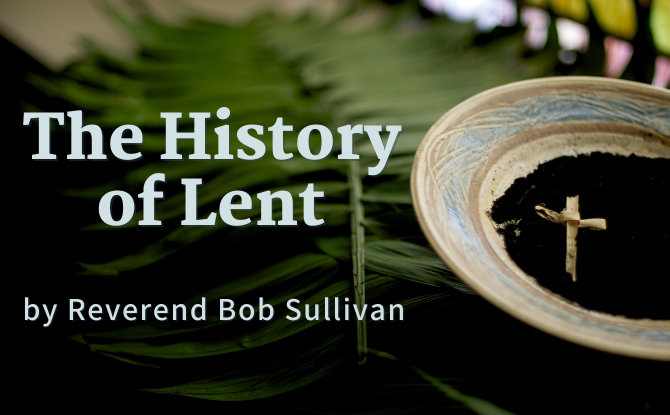This week we began the season of Lent. The original idea for this season started in the early church and grew out of the forty days Jesus spent in the desert before he started his earthly ministry.
The first Lent emerged shortly after the Council of Nicea in 325AD. Its primary focus was on new converts to the faith so they would have a time of repentance and reflection before they were baptized on Easter day. The season of Lent quickly became a general practice for the whole church.
The earliest observances of Lent seem to focus on the practice of fasting. These fasts took on many different forms until they were regularized by Pope Gregory. He stated that the period of fasting was to begin on a Wednesday, 46 days before Easter with a ceremony of ashes.
Lenten practices remained essentially unchanged for centuries. Then, over time, the emphasis on fasting began to lessen and a new practice of “giving something up” began to emerge. The idea being that a person would give up some luxury or convenience as a personal sacrifice. This became the new centerpiece of Lent.
Over the years the practices of Lent have continued to evolve. While fasting and “giving something up” are still practiced, the focus has shifted more to preparing our hearts and minds for the message of Easter, just as those early converts were called to do.
The church challenges us to make this preparation by observing a holy Lent. We are called to “self-examination and repentance; to prayer, fasting, and self-denial; by reading and meditating on God’s holy Word.” [BCP #265]
Lent has always been an important time in the life of the church and its people. The more we live into the Lenten traditions, the more we prepare ourselves, the more glorious our Easter experience will be.
– Reverend Bob Sullivan



